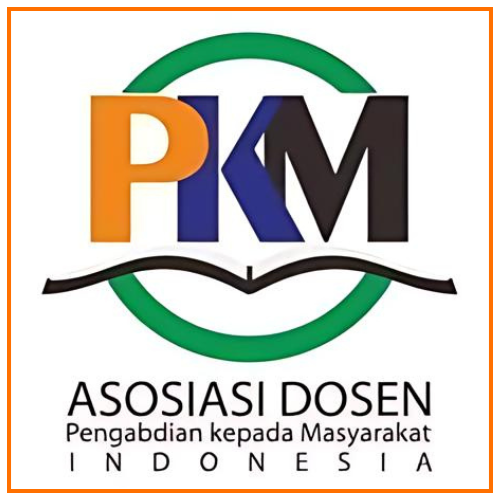The Influence of Watching English Cartoons on English Language Acquisition: A Case of Selected Filipino Preschoolers
Abstract
Furthermore, data were analyzed following the thematic analysis method. Results revealed that preschoolers’ English language acquisition is affected by certain factors, i.e., exposure to multimedia technologies, social relationship/linguistic environment, motivation, attitudes, and interests of the child. Regarding phonological influence, preschoolers articulate terms based on the pronunciation heard from cartoon shows. F/P1 acquires a British accent, and both participants can utter all vowel/consonant sounds except ‘r.’ They can use words even without understanding their context. Concerning semantic influence, active exposure to cartoons and engagement in an immediate environment led to meaning-making processes strengthening critical and creative thinking skills. Regarding syntax, participants’ multi-word utterances are drawn from longer potential sentences that express a complete thought. Although the words produced are ungrammatical by adults’ standards, they still adhere to grammatical rules.
Keywords: English Language Acquisition; English Cartoons; Preschoolers; Factors; and Influence.
Full Text:
PDFReferences
Alexiou, T. (2015). Comic series and ‘Peppa Pig’: A hidden treasure in language learning. In M. Tzakosta (Ed.), Language learning and teaching in multi-cultural environments, 187-206. Athens, Greece: Gutenberg.
Alghonaim, A. (2019). Impact of watching TV English cartoons on EFL language acquisition: A case study of an Arabic young child. Arab Journal for Scientific Publishing, 27.
Alghonaim, A. (2020). Impact of Watching Cartoons on the Acquisition of English Inflections: A Case Study of an Arab Child. Arab World English Journal. Retrieved from http://ijee.org/ yahoo_site_admin/assets/docs/5.341112216.pdf.
Asgari, A. (2010). The influence of informal language learning environment (parents and home environment) on the vocabulary learning strategies. English Language and Literature Studies, 1(1). https://doi:10.5539/ells. v1n1p7.
Beers, S. (2012). 21st century skills: Preparing students for their future.http://cosee.umaine.edu/files/coseeos/21st_century_skills.pdf.
Brody, J. (2015). Screen addiction is taking a toll on children. The New York Times. https://well.blogs.nytimes.com/2015/07/06/screen-addiction-is-taking-a-toll-on-children/?_r=0.
Brown, D. H. (1973). Principles of language learning & teaching. (4th ed.). New York: Longman.
Bulté, B. & Housen, A. (2018) Syntactic complexity in L2 writing: Individual pathways and emerging group trends. International Journal of Applied Linguistics, 28. DOI: 10.1111/ijal.12196.
Creswell, J. W. (2012). Educational research: Planning, conducting, and evaluating quantitative and qualitative research (4th ed.). Boston, MA: Pearson.
Derakshan, A. & Karimi, E. (2015). The interference of first language and second language acquisition. Theory and Practice in Language Studies, 5 (10), p.2112-2117. http://dx.doi.org/10.17507/tpls. 0510.19
Enayati, B. & Kakarash, F. (2016). The effect of watching English cartoons on grammatical accuracy of elementary students in Shahab English Institute of Mahabad, Iran. Modern Language Studies. http://www.europeansp.org/files/cd_papers/r_376_170213132823.pdf
Fatimah, A. S., Santiana, & Saputra, Y. (2019). Digital Comic : an Innovation of Using Toondoo As. ENGLISH REVIEW: Journal of English Education, 7(2), 101–108. https://doi.org/10.25134/erjee.v7i2.1526.
Hopkins, L., F. Brookes & J. Green (2013), “Books, bytes and brains: The implications of new knowledge for children's early literacy learning.†Australasian journal of early childhood., 38/1, 23-28, https://search.informit.com.au/documentSummary;dn=266659007690976;res=IELHSS.
Indrayani, N. (2016). Language development at early childhood. International Conference on Education (IECO). 279-289.
Karim, K., & Nassaji, H. (2013). First language transfer in second language writing: An examination of current research. Iranian Journals of Language Teaching Research, 1(1), 117-134.
Nemati, M., & Taghizade, M. (2013). Exploring similarities and differences between L1 and L2. IRJABS, 4(9), 2477-2483.
Perween, S., & Hasan, H. (2020). The impact of cartoons on toddlers’ language acquisition. Language in India, 20 (2), 113.
Phillips, M., Brooks-Gunn, J., Duncan, G. J., Klebanov, P., & Crane, J. (1998). Family background, parenting practices, and the Black–White test score gap. In C. Jencks & M. Phillips (Eds.), The Black–White test score gap (103-145). Washington, DC, US: Brookings Institution Press.
PoÅ¡tiÄ, S. (2015). Influence of cartoon network on the acquisition of American English during childhood. Institute of Foreign Languages. Vilnius University, Lithuania, 190.
Safwat, R. (2014). Effect of parent interaction on language development in children. Egypt J Otolaryngol 30, 255–263. https://doi.org/10.4103/1012-5574.138488.
Santiana, S., Dede, S. L., Arini, N. H., Muthmainnah, M., Mohammed, G., & Abdul, G. M. (2021). Anitales : A Modern Application Used Perceived by the Students in Digital Story Telling Class. International Journal of Social Science & Management Studies, 7(5), 1–11. https://osf.io/736zp.
Tobias, J. (n.d.). English Cartoon and Home Language on the Listening and Speaking Skills of Pre-Schoolers. Retrieved from https://www.academia.edu/25109345/English_Cartoon_and_Home_Language_on_the_Listening_and_Speaking_Skills_of_Pre_Schoolers.
Wa-Mbaleka S.W. and Gladstone R.K. (2018). Sampling strategies in qualitative research.,qualitative research for senior high school. Oikos Biblios Publishing House, Cavite, 65.
Yin, R. K. (1994). Case study research: Design and methods. Thousand Oaks, CA: Sage.
Yin, R. K. (2002). Case study research: Design and methods. Thousand Oaks, CA: SAGE Publications.
Yin, R. K. (2003). Applications of case study research (2nd ed.). Thousand Oaks, CA: Sage.
DOI: https://doi.org/10.37058/jelita.v1i2.5249
Refbacks
- There are currently no refbacks.








Journal of Education, Language Innovation, and Applied Linguistics
Lembaga Penelitian, Pengabdian Kepada Masyarakat dan Penjaminan Mutu Pendidikan (LP2M-PMP) Universitas Siliwangi
Jalan Siliwangi Number 24, Kota Tasikmalaya - 46115
West Java, Indonesia










